Descriptions of Plants
There is a whole language, drawn from Latin, that is used to describe plants. Some of the words are familiar, many are not, but when botanists are writing to one another the words have very precise meanings and are a convenient shorthand, each one saving a whole phrase that would be needed if the words were not available.
Leaves
|
Simple leaves Botanists have established
the ground plan for a leaf as consisting of a broad blade,
on a leaf stalk (petiole) and with two broad places where
the leaf joins the stem which are called stipules. Some
or all of these may be missing. I tell my students that if you
can imagine a variation on a basic plan, some plants have already
done it. |
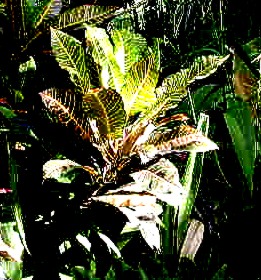 |
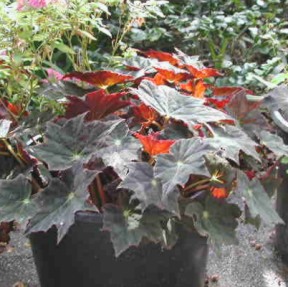 |
The croton leaves above are quite ordinary (in spite of their lurid colours). The begonia to the left has a palmate shape (like a hand), and this particular species has the petiole connected to the center of the underside of the leaf blade instead of to its base. This umbrella-like arrangement has a shorthand name - we say the leaf is peltate. |
Simple leaves are very common: lilies and most bulbs, grasses, more than half the shrubs around a typical garden, most of the dieffenbachia/anthurium family - the list could be very long.
Compound leaves
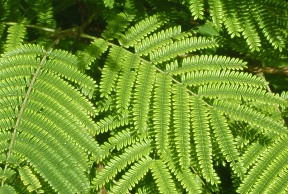 |
Compound leaves have the blade part separated into smaller pieces.This Peltophorum leaf has the leaflets coming off what would be the midrib of the leaf blade. It is a little like a feather in its form: The botanical term is pinnate.(This leaf is actually twice- or bipinnate because each leaflet is divided into smaller pieces.) |
|
Certain plant families seem to have taken a particular evolutionary track with their leaf forms. The legume family, for example, often has pinnately compound leaves, but if you think of clover, you will see that the number of |
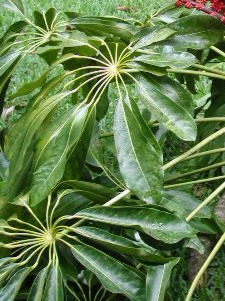 |
|
It isn't always obvious at a glance if you are looking at a branch tip with leaves arranged evenly along its length, or if it is a single large leaf with leaflets. |
||
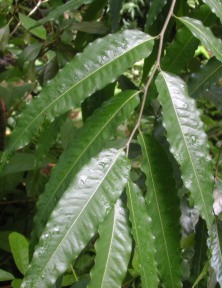 |
The image to the left is a branch tip with simple leaves | |
|
The branch
to the right has compound leaves
|
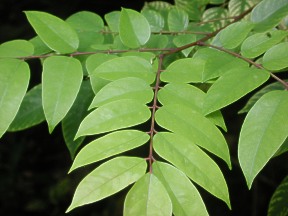 |
|
| Where the leaflets (green) are attached to the midrib (pinkish in colour), there is no bud. |
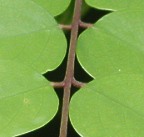 |
|
Where the (purplish) midrib (now called the petiole) is attached to the branch (also purplish in colour) there is a bud that could grow out as a branch or as a flower. Look for the bud. This is the way to tell a leaf from a leaflet. |
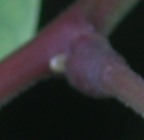 |
Leaf Arrangement
If a plant has its leaves on a stalk, there are several ways in which they may be arranged. Most commonly they are either in pairs, opposite oneanother on the stem, or they are produced singly in an alternate arrangement.
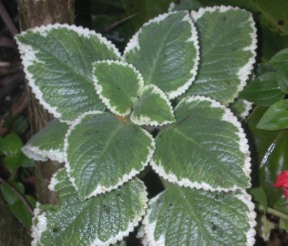 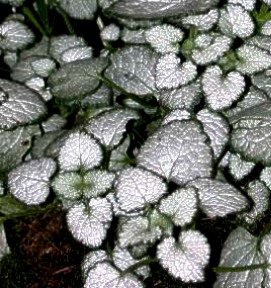 |
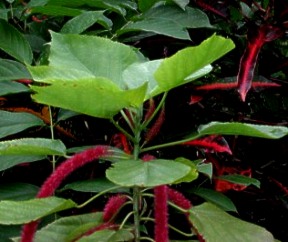 |
The two images, left and centre above, are both of plants with opposite leaves,and because each pair is at right angles to the pair below it, they are said to be opposite and decussate Both these are in the mint family where this arrangement is very common.
The right hand picture is Acalypha hispida, Red-hot cat tail, which has an alternate leaf arrangement.
Leaves can also be three at
a node, or several, in which case they are said to be whorled.
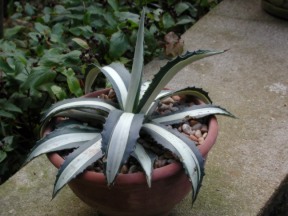 |
One more situation, where the plant doesn't have a stem. Here the leaves are in a basal rosette. I know that this century plant does eventually make a tall stalk, but that is when it is flowering, and all bets are off at that point. |
Back to How to ask a Question